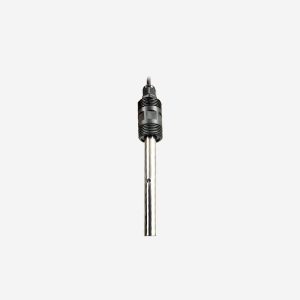
Residual chlorine transmitter Product Introduction:
Residual chlorine transmitter is one of the intelligent online chemical analysis instruments, is a widely used in thermal power, chemical fertilizer, metallurgy, environmental protection, pharmaceutical, biochemical, food and tap water in the solution of residual chlorine value and temperature monitoring. The monitoring data can be connected to the recorder through the transmission output to realize remote monitoring and recording, and can also be connected to the RS485 interface through the MODBUS-RTU protocol to facilitate the computer to realize monitoring and recording. At the same time, the device has two relay interfaces, you can set the alarm point output
* Models:JXBS-3001-Residual chlorine
* Minimum order quantity: 1 piece
* Delivery time: within 24 hours
Residual chlorine transmitter Features:
The probe is composed of residual chlorine glass electrode and silver chloride reference electrode, with stable signal and high precision. It has a wide measuring range, good linear degree, good waterproof performance, easy to use, easy to install, modular design of board card, assembly and configuration, using 2.4 inch 128*64 dot matrix screen, isolation transformer output, Less interference, isolation RS485 communication, residual chlorine measurement, temperature measurement, upper and lower limit control, transformer output, RS485 communication, configurable temperature manual, automatic compensation function, can set high and low alarm function, and hysteresis, LCD backlight switch function, increase universal password function and other features
Residual chlorine transmitter Parameters:
Determination parameters: residual chloride ion
Measuring range: 0-20mg/L
DC power supply: 12-24V DC
Power consumption: ≤0.15W (@12V DC, 25℃)
Residual chlorine range: 0-1000ppm(default) /0-5000ppm/0-10000ppm
Output signal: 485/4-20mA/0-10V
How to use residual chlorine transmitter:
1. Install electrodes
Electrodes are very delicate components and must be installed correctly. Incorrect installation can lead to electrode damage or irreversible damage. Electrodes are piped. Immersion. French installation can be.
Do not put the electrode directly into the water, should choose the electrode mounting bracket or flow cup fixation. Before installation, be sure to waterproof and close the raw material belt (3/4 thread) to avoid water entering the electrode and causing short circuit of the electrode cable.
During the water shutdown, ensure that the electrode is immersed in the measured liquid or wear a protective cap with protective liquid inside. If the temperature is low in winter and the water is stopped for a long time, add an antifreeze device or bring back the indoor water storage. Otherwise, the service life will be shortened.
2. Set the menu
On the normal display screen, press the [Menu] key to enter the “Enter Password” screen. The default password is four zeros.
After entering the password correctly, press the “Confirm” button to enter the “Menu” interface.
System Settings: includes buzzer and backlight Settings, password change, and factory Settings.
“Signal setting” : includes signal one and signal two; Signals include: electrode type and temperature compensation.
“Equipment calibration” includes residual chlorine calibration, residual chlorine modification, ORP calibration, ORP modification, EC calibration, EC modification.
Remote Settings include RS485 and AMR.
“Alarm setting” includes residual chlorine level alarm, ORP level alarm and EC level alarm.
Information Query includes software and hardware versions.

FAQs:
1. Why do you measure chloride ions in water?
Because tap water is often disinfected with CL2, there will be a lot of CL- in the water, which is harmful to human body. Moreover, CL2 is a toxic substance, so the water we usually drink needs to be stored for a period of time, so that the CL- in the water can be released into the air, which is good for human body.
2. In what form does residual chlorine exist in water?
There are three forms of residual chlorine in water: total residual chlorine, free residual chlorine and combined residual chlorine.
Combined residual chlorine, also known as combined residual chlorine, refers to the chlorine and ammonia compounds in water.
Free residual chlorine, also known as free residual chlorine, refers to OC1+, HOCl, Cl2 and so on in water. It has fast bactericidal speed and strong bactericidal power, but it disappears quickly.
Total residual chlorine is the sum of bound and free residual chlorine.
3. How do I maintain the residual chlorine electrode?
Chlorine sensors generally do not require routine maintenance. When there is an obvious fault, please do not open the repair, and contact us as soon as possible!
After using the chlorine electrode, clean the electrode head with clean water and cover it with a protective cover.
If dust and mineral components adhere to the electrode diaphragm, sensitivity is reduced and adequate measurements may not be possible. Make sure the platinum ring is clean.
Good residual chlorine electrode platinum induction ring should always be kept clean and bright. If the platinum ring of the electrode becomes rough or contaminated after measurement, please clean it in the following way: (for reference).
1. Inorganic pollution: Immerse the electrode in 0.1mol/L dilute hydrochloric acid for 15 minutes, gently wipe the remaining chlorine electrode platinum ring with a cotton swab, and then clean it with tap water.
2, organic matter or oil: the electrode is immersed in the tap water containing a small amount of detergent (such as dish soap), thoroughly clean the induction surface of the electrode sensor. Gently wipe the platinum ring of the electrode with a cotton swab, then rinse with running water to complete the cleaning. If the electrode platinum ring has formed an oxide film, please use toothpaste or 1000 mesh sandpaper to moderately sand the sensor surface, and then wash with running water.





Reviews
There are no reviews yet.